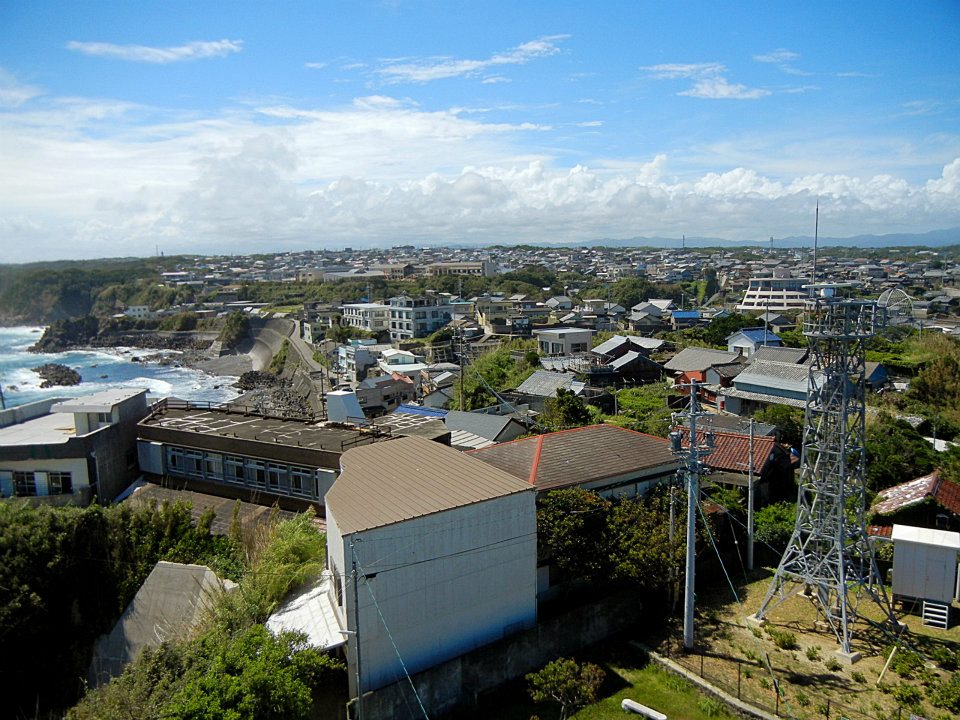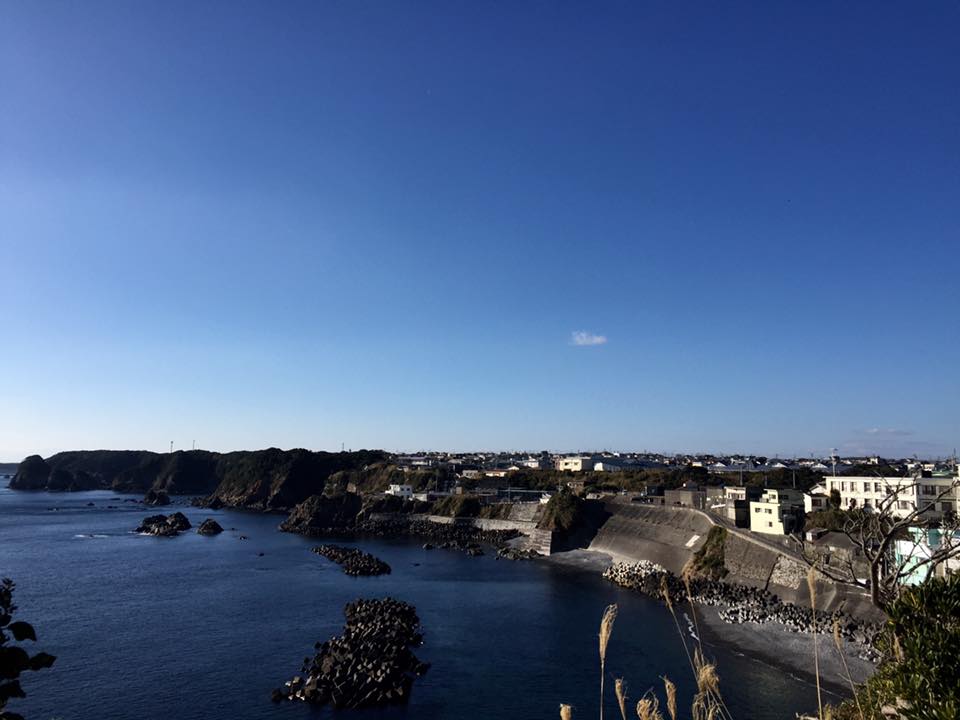
About
三重県志摩半島南部に位置した町。旧英虞郡。町名は大王崎に由来。2004年(平成16年)10月1日に志摩郡阿児町、浜島町、磯部町、志摩町と合併し志摩市大王町となった。
地理
三重県南部(南勢/伊勢志摩)、志摩半島の南東部に位置し、東海岸は太平洋(遠州灘)、西海岸は英虞湾に面する。
山:登茂山(「ともやま」と表記されることも多い)
岬:大王崎、退治崎
運河:深谷水道
沿革
1954年(昭和29年)8月1日 – 波切町・船越村・名田村が合併して発足。
1956年(昭和31年)9月30日 – 畔名村を編入。
2004年(平成16年)10月1日 – 浜島町・志摩町・阿児町・磯部町と合併して志摩市が発足。同日大王町廃止。
about nakiri
Mie Prefecture Located in the southern part of Shima Peninsula. Former British Columbia county. The town name comes from Ouzaki. On October 1, 2004, it merged with Shima – gun Aki Town, Hamajima Town, Isobe Town, Shima Town and became Shima City Ohyo Town.
Geography
Located in the southern part of Mie Prefecture (Minami / Ise Shima), located in the southeastern part of the Shima Peninsula, the east coast faces the Pacific Ocean (Enzanada) and the west coast faces Ago Bay.
Mountain: Shigeyama (often referred to as “toyama”)
Cape: Ojyazaki, Daigakuzaki
Canal: Fukaya Suido
History
1954 (Showa 29) August 1 – Hatachi cho, Funakoshi village, Noda village merged and started.
1956 (Showa 31) September 30 – Transfer Kisena village.
2004 (Heisei 16) October 1 – Shima city was established by merging with Hamajima cho, Shima-cho, Aki-cho, and Isobe-cho. On the same day Oya Town abolished.

波切
平城京から出土した木簡より、同地地名がいくつか発見されている。年代がわかっているもっとも古い木簡は天平17年(745年)であり名錐の地名が、それ以前と思われる(年代不詳)ものからは魚切里がそれぞれ見られる。平安期に書かれた『和名抄』にも名錐、『神鳳鈔』では名切、『吾妻鏡』では菜切と書かれている。もとは横に浸食され崩れた地を指すナグレであったと考えられる。
船越
『神鳳鈔』に東船越という名称で言及されている。船越とは全国に見られる地名であり、船による対岸への行き来がたやすい地を指す。船越神社も参照。
名田
波の荒いことを示す灘が由来であると考えられる。
畔名
『神鳳鈔』に安瀬名とあり、名田と同様に安瀬灘などが由来であると考えられる。
nakiri
From the wooden chapter excavated from Heijokyo, some of the same place names have been found. The oldest wooden figure known to the ages is Tenpyo 17 (745), and the name of the name of Diao, which is considered to be earlier (unknown), can be seen fish. Also written in Heian period “Nagajima” is a name Nori, “Shinho Fumi” is nice, “Azuma Mirror” is written as Nanashi. Originally it is thought that it was a Nagre that points to the land eroded and crumbled sideways.
Funakoshi
“Shinto fengo” is mentioned under the name East Funakoshi. Funakoshi is a place name that is found throughout the country, and refers to the place where ship’s easy access to the other side is easy. See also Funakoshi Shrine.
Nata
It is thought that the Nata indicating the rough wave is the origin.
Azena
There is Ansei name in “Shin Feng Sha”, it is considered that Anasase Nada etc. originate like Nata.
大王崎
1927年(昭和2年)に作られた大王埼灯台のある城山から、波切神社のある宮山までを指す。岬の付近に大王崎古墳があったが、消滅した。
暗礁・岩礁が多く、「伊勢の神崎、国崎の鎧、波切大王なけりゃよい」と唄われたほどの航海の難所で、遭難する船が多く、天保2年(1832年)には積荷を横領するための偽装難破事件(波切騒動)も起きている。この事件では難破を偽装した船頭のほか、取り調べに来た役人を死亡させてしまった住民らが処刑された。役人の殺害に関しては、要求された賄賂を支払ったにもかかわらず便宜をはからなかった怨恨によるとする説と、泥棒と誤認して取り押さえた結果の過失致死とする説がある。高野澄『伊勢神宮の謎』や『大王町史』では後者の説を支持しており、また吉村昭の『朱の丸御用船』も後者を史実とした上で小説化したものである。
daio-zaki
From 1927 with the Great Lighthouse, which was made in the (1927) Shiroyama, it refers to up to Miyayama with Nakiri Shrine. Cape there was a Daiozaki ancient tomb in the vicinity of, but disappeared.
Many reef-reef, “Ise Kanzaki, armor of Kunisaki, Nakiri Great Without good” in the choke point of the voyage of about has been touted as the ship to distress many, embezzle cargo in 1831 years (1832) impersonation shipwreck incident for (Nakiri turmoil) is also happening. In addition to the boatman who impersonate a shipwreck in this incident, residents that had killed the officials who came to interrogation were executed. For officials of the killing, and the theory that due to the grudge that was not paced despite convenience paid the requested bribe, there is a theory that the manslaughter as a result of subdued and mistaken as a thief. Supports a Kiyoshi Takano “Ise Shrine of mystery” and “the Great Town, History” In the latter theory, also Akira Yoshimura of “Zhu round patronage ship” it is also what was fictionalized did on the historical fact of the latter.
